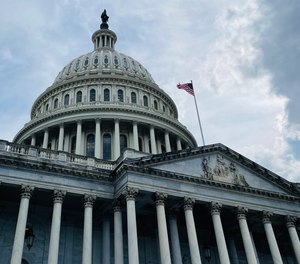
Recently passed legislation promises local government leaders with new funding opportunities in the coming months … and the coming years
This past summer saw the passing of the ambitious Inflation Reduction Act (IRA) – a slimmed down version of the proposed “Build Back Better Act” originally introduced in 2021. As is the nature of legislation, much will be disputed and opinions will vary, but it will, no doubt, affect Americans both personally and professionally. The lofty goals of the IRA are to curb inflation by reducing the deficit, lower prescription drug prices, and invest in domestic energy production while promoting clean energy. Through these objectives, the impact of the Inflation Reduction Act on local government will be far-reaching.
The historic investment into combating climate change has been getting the most attention. It’s the first of this size and the tentacles from this measure will affect everything from jobs and apprenticeships to manufacturing and consumer purchases.
As a result, grants, funding, tax credits and rebates will be available for families, nonprofits, energy- and climate-related programs and businesses, and rural communities as well. These opportunities will be available mainly through the Environmental Protection Agency, the Internal Revenue Service, the Department of Labor and the U.S. Department of Agriculture.
Let’s take a closer look at some of the other impacts on local government from this legislation.
To start, the Inflation Reduction Act healthcare reform aims to lower costs for Americans, including:
A historic $369 billion in incentives for energy and climate-related programs, including tax rebates and credits for American households to lower energy costs, will affect manufacturing, infrastructure and consumers.
The Inflation Reduction Act’s impact on local government will extend to environmental infrastructure in agriculture, forestry and rural areas as well.
Finally, the Inflation Reduction Act includes a 15% corporate minimum tax rate for corporations with at least $1 billion in income. This new tax is expected to raise some $313 billion over 10 years. Since the bill is projected to raise more in taxes than it spends, a reduction in the federal deficit is anticipated.
The Inflation Reduction Act will not raise taxes on families or small businesses that make less than $400,000 a year.
Timing regarding the IRA is broad. Since it is a 10-year plan, most changes won't happen immediately.
On the other hand, there are some already in effect. For example, the Department of Labor’s Wage and Hour Division and Office of Apprenticeship will support the IRA’s prevailing wage and apprenticeship provisions. Those provisions go into effect on January 29. In October, the USDA announced that distressed borrowers with qualifying USDA farm loans have already received nearly $800 million in assistance – part of the assistance for distressed farm loan borrowers provided through the IRA. Buying a new electric vehicle in 2023 will provide a tax credit for consumers next year. But, the tax credit for buying a used electric vehicle may not be available until 2025.
Bottom line: Local government leaders as well as industry suppliers, nonprofits and community organizations should be on the lookout for funding opportunities to participate in the coming months … and the coming years .
There’s a lot to see and a lot to unpack in the bill - find the full text here .
Copyright © 2025 GovGrantsHelp.com. All rights reserved.
